The Wildlife of Sudan and the Significance of Wildlife in Human Civilisations
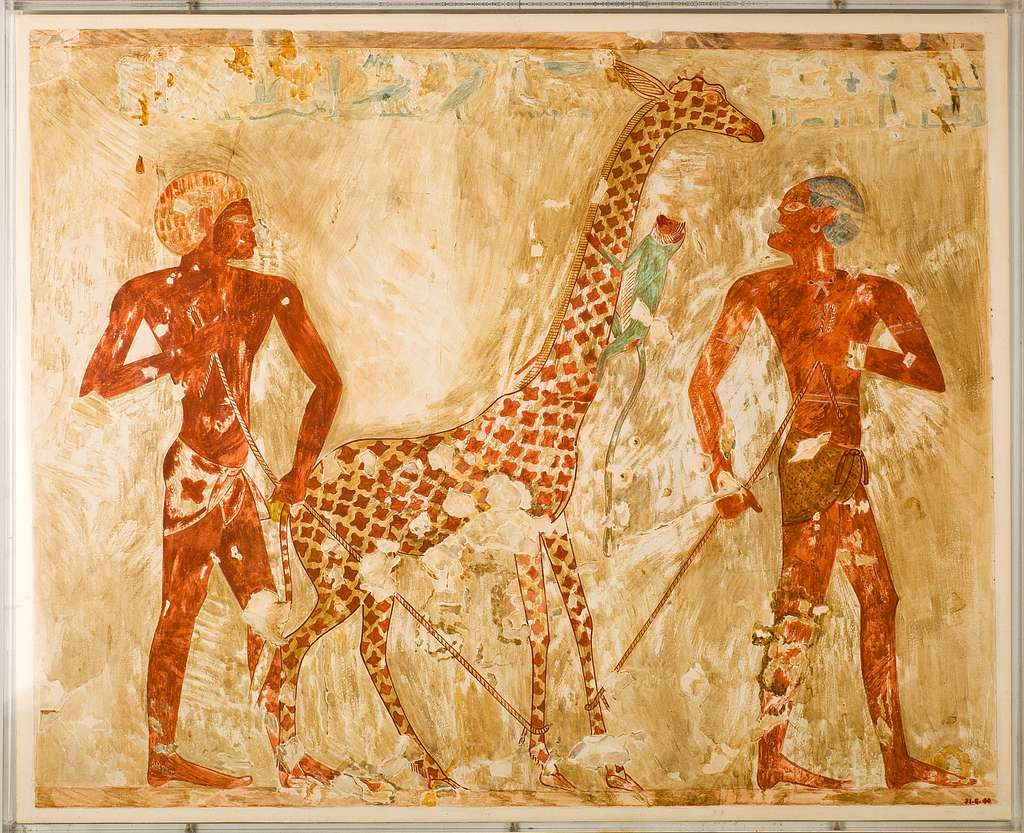
Wildlife is one of the most important natural resources of each country. For wild animals to be preserved, there are many terminologies in specifying animals and extinction status that have to be recognised. Animals contributed vastly in the making of human civilisations throughout history and Sudan needs to pay attention to this exquisite wildlife more carefully.
Terminologies in the wildlife are very important as they help us classify animals and differentiate between them. The main terms in the world of wildlife are: life, domain, kingdom, phylum, class, order, family, genus, species, and binomial or scientific names. Of course, all animals fall under the Kingdom Animalia and phylum Chordata. The real different characteristics and classification begins with the classes – mammalia (mammals), aves (birds), amphibia (amphibians), reptilia (reptiles), and actinopterygii (fishes).
After the classes come the order, which refers to a group of animals that share similar characteristics.
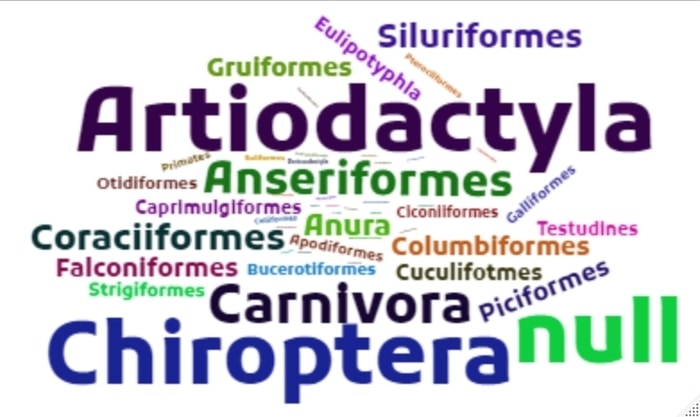
In the genus rank, animals are classified to a group of animals that may share the same ancestor that might have evolved to its current animal body form.
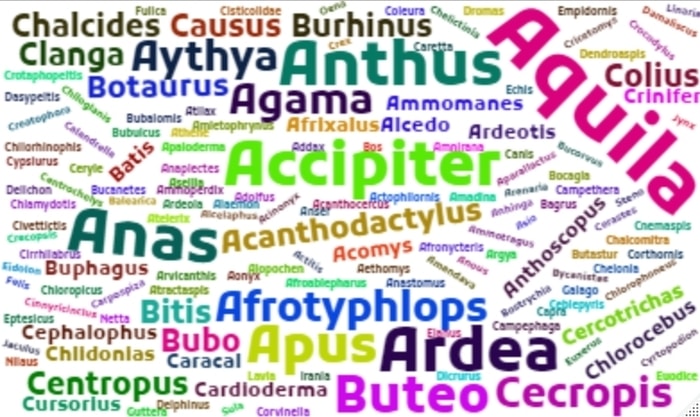
Right after the order comes the family. In the family level, there’s even a greater similarity within a specific order of animals in terms of genetics.
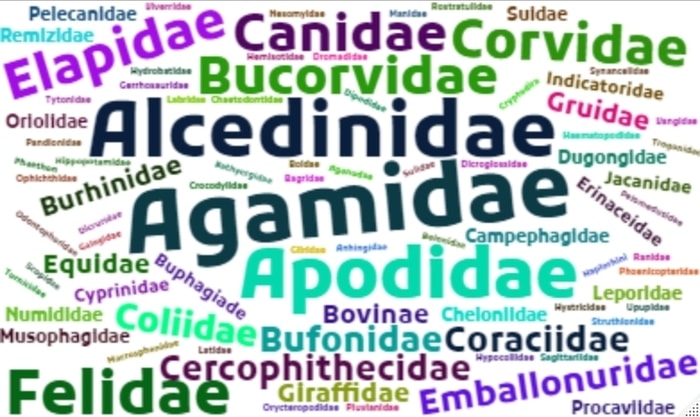
In the species rank, animals who belong to the same family are separated according to their location, habitat or abbreviation.
After the species, there’s the last classification, which are the binomial names. They are like primary keys in databases. A single animal may have many names according to each country, culture and historic period. For instance, in Sudan, a hippo is called as girentiya while in Egypt it’s called sayyid qishta. How do we know that both nations are referring to the same species of animals? We use the scientific names or sometimes called binomial names, which are written in Latin script.
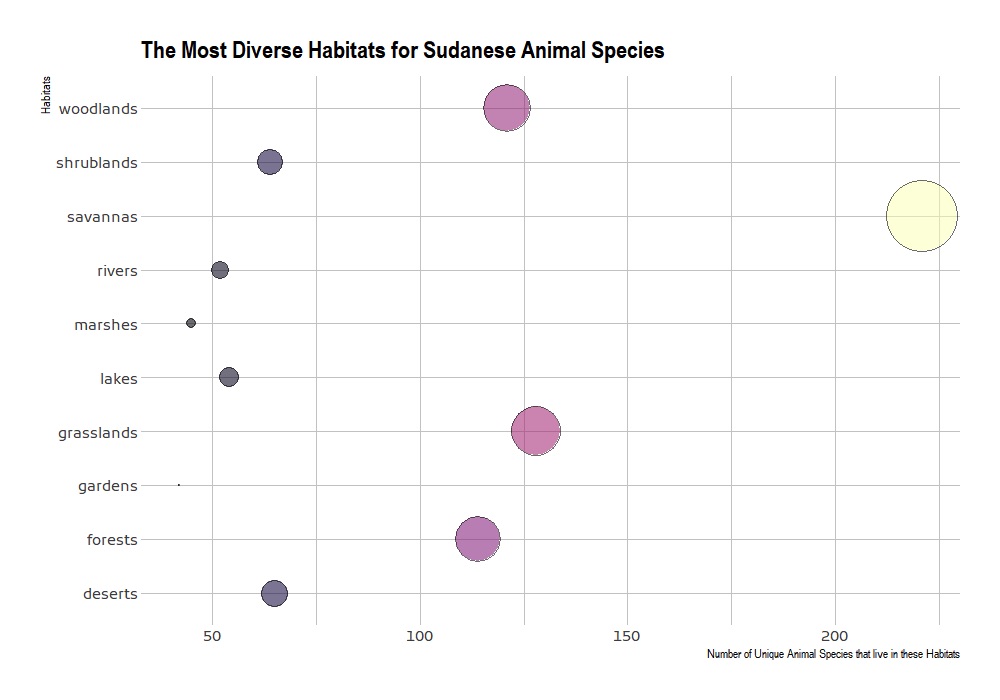
Extinction status
Extinction is basically the termination of a specific species, which happens when the last member of a specific species’ population dies. Extinction happens due to climate change, habitat degradation, coextinction, which is the extinction a species as a result of the extinction of another species, predation, competition, diseases, and genetic pollution. Extinction status of specific species are determined and updated based on the percentage of the population that belong to that specific species that still live in the wild without human intervention compared to the current total population or based on the historical total population of these species.
Extinction status has seven different levels:
- Ex: Extinct
- EW: Extinct in the wild
- CR: Critically endangered
- EN: Endangered
- VU: Vulnerable
- NT: Near threatened
- LC: Least concerned

The extinct Sudanese animals
Only two species of the Sudanese wild animals are extinct, which are the auroch and the scimitar oryx. Aurochs are huge gigantic type of bulls that went extinct in 1627 in Poland. Scimitar Oryx is a beautiful white oryx with a brown neck are extinct in the wild in 2000, but they still live in special facilities to preserve their population.
Sudan-region specified animals
Some wild animal species are named after Sudan or its regions like Kordofan or Nubia. They are 19 animals from various classes two of them are the Nubian Giraffe and the Kordofani Giraffe.
Wildlife and human history
Wildlife made a huge impact on the history of humanity across the globe in many industries, sectors, and fields of life of humanity since the dawn of time and the first human beings, Adam and Eve. Their first mentions were made by cave men, but the questions of ‘how humans interacted with wild animals?’ and ‘what observations on these animals were recorded?’ were answered only when humans invented alphabets and writings. That’s why the first clear explanations, legends, heritage, and descriptions of these animals were first depicted in the ancient civilisations of the Mediterranean Sea and Asia.
To see how Sudanese people interacted with wildlife throughout history – as data journalist and data scientist – I looked into wild animals in the Sudanese heritage, mythology, legends and folklore, but they are very scarce in the digital world. I thought about researching the references of the Sudanese wild animals in global legends and folklores.
Wild animals contributed in many aspects of human history and industries. They shaped human civilisations in the fields and industries such as medicine, entertainment, law enforcement, warfare, literature, religion, economy, mythology and many other fields of life.
In pre-historic caves of France in the ice age, such as the Chauvet Cave, many animals were depicted in the cave paintings such as the auroch, which is an extinct huge bull. In addition, lions, cheetahs, hyenas, and rhinos were depicted there.
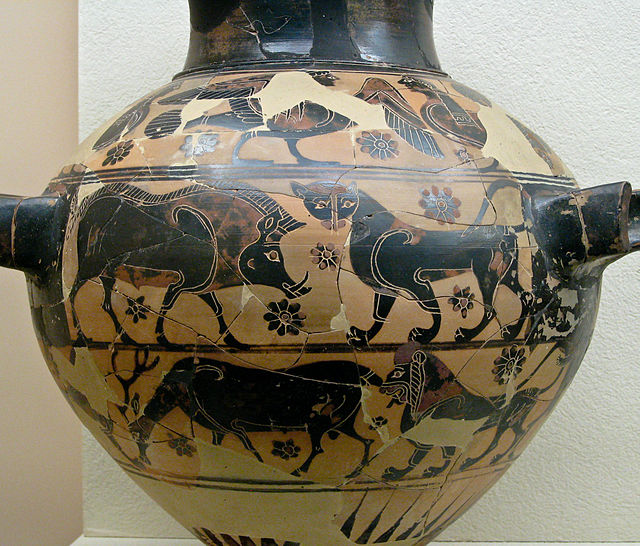
In ancient Greece, people used to slaughter aurochs as a religious sacrifice. The also believed that the bearded vulture was considered as a sign for soothsayers to guide the Greeks in the right decisions in politics. Homer evoked Nightingales in the Odyssey myth of Philomela and Procne. The house Sparrow was a symbol of love. Homer also mentioned lions at least 45 times in his poems. The little owls were perceived as a symbol of wisdom in Greece. Rose-ringed parakeets were used as pets in Greece. Scimitar oryx are the prototypes for unicorns to the Greeks. In Greek mythology, if a werewolf died, but its body wasn’t destroyed, it would haunt the battlefields as a vampire-like striped hyena. White storks are considered as parental devotions in old Greece. The western yellow wagtail was an inspiration for the phoenix in the Greek mythology. In ancient Greece the hawksbill sea turtles were harvested to make jewelry, combs, brushes, and rings and so was this practice was in ancient Rome. Greeks also depicted the leopards were the symbol of Dionysus, which was one of their deities.
In the Roman Empire, the auroch’s horns were used as hunting horns. Dolphins were depicted in Roman arts. They also used to hunt lions and use them in their entertainment industry by unleashing them in the fighting arenas for gladiators to fight against them and entertain the people. In addition, Romans used to have a death penalty to criminals called damnatio ad bestias, which translates to condemnation to beasts. In damnatio ad bestias, leopards and lions were unleashed on criminals as a death sentence.
Like the Greeks, Romans used to raise rose-ringed parakeets as pets too. Unlike the Greeks, Romans didn’t have a sense of fantasy and a touch of literature for the scimitar oryxes or imagine them as unicorns because a scimitar oryx was considered as another animal to be eaten like cattle.
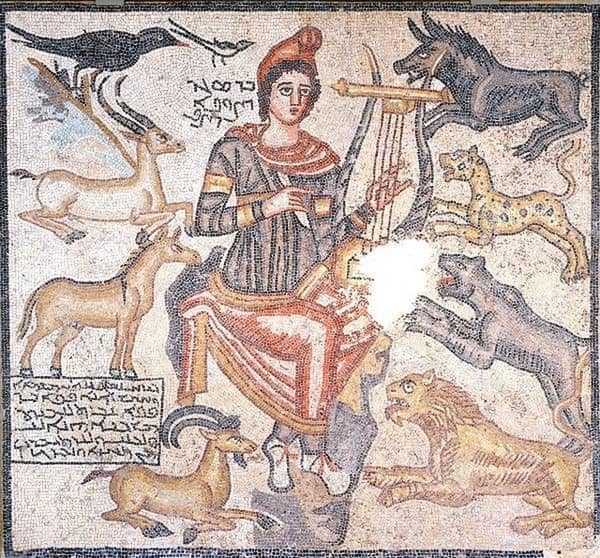
In ancient Egypt, the African sacred ibis was offered as a religious offering. African wild dogs symbolise order over chaos in Egypt’s predynastic period. The African wolf symbolised many worshiped idols in ancient Egypt like Anubis. Egyptian vultures were sacred, symbolised royalty in Egypt and was a hieroglyphic letter spelled as (a). Egyptian cobras were worshiped in Egypt. Giraffes used to live in Egypt and Sudan before they went extinct in the Nile valley and was depicted in ancient Egypt as a hieroglyphic letter spelled as (mmy). Hippos symbolised rebirth and regeneration by ancient Egyptians. Hawksbill sea turtles were harvested in ancient Egypt and their shells were used as food plates or holders for objects. Big cats like leopards and lions used to live on the banks of the Nile in Egypt and Sudan around 1000 BC and were acknowledged by Egyptians. Egyptians raised leopards as pets in ancient era. Ancient Egyptians associated lions with the sun, Sekhmet (a deity responsible for protecting the pharaohs), and the pharaohs. They also symbolised lions as a symbol for protection and danger. It may be possible that Egyptians were the first civilisation to associate lions with royalty. Nile Crocodiles were associated with Sobek, the Egyptian deity of fertility. Peregrine falcons depicted Horus, which was the deity of sky and kingship in Egyptian religion. Just like the Romans, the scimitar oryx was killed but not for food. It was sacrificed as a religious offering. Western yellow wagtail represented Atum, which was a deity in ancient Egypt. Egyptians used to tame cheetahs as they have little hostility towards humans and was also royal pets along by lions and leopards. It was believed that cheetahs took the spirits of deceased pharaohs away. Egyptian hunters used both dogs and cheetahs in their hunting. The dogs were used to capture the preys, but the cheetahs were used to kill the preys. In addition, caracals were believed to be guarding the tombs of the pharaohs.
In Africa, the Luo people of Kenya believed that the African rock python is evil and were manipulated by sorcerers to do harm to others. The San people in Southern Africa believed that African wild dogs were the origin of death, ultimate hunters, and that the shamans and medicine men were able to transform into African wild dogs. Moroccans used the African wolf in many aspects in their folk medicine and myth. They used its fat as a skin lotion, burned its intestines to ensure the fertility of married couples, eaten its gall bladder to cure sexual impotence. In Lesotho, the hadada ibis was considered as a sign for rains.
In West Africa, people believed that the African wolf was the first creature created by God. Igbo people of Nigeria respected the ball python as it symbolised Earth in their culture to the extent that if one of these pythons passed in a private property, it wouldn’t be harmed and if it died a funeral would be made for it and it would be buried in a coffin. The black-backed jackal was believed to be a smart, treacherous, and have superior intelligence in West Africa. Ethiopians believed that the jackals were banned by Noah – peace be upon him (PBUH) – from entering the ark because that they had evil characteristics and unworthy of saving until God commanded him to let them enter. West Africans considered spotted hyenas as a symbol of stupidity, ugliness, fearfulness, and physical power.
A global bird
One of the interesting findings that I came across is the white stork. This bird earned some sort of global recognition in cultures of various nations. It was a symbol for parental devotion in ancient Greece and Rome. Jews considered it as a symbol of mercy. In the past, Muslims loved these birds because they pass by Mecca in their migration annually during pilgrimage as if these birds performed the pilgrimage with Muslims. Germans, Polish and Dutch believed these birds bring good luck to their lives and endeavours. They used to build tall bird towers for them to nest. Moreover, in German folklore, these birds used to deliver babies to their parents. In Slavic mythology, it was believed that they carry unborn souls from Vyraj (Paradise) to Earth. However, in medieval Europe, it was associated with fornication.
Secretary bird is the current national animal of Sudan. Secretary birds were depicted in ancient Upper Egypt on an ivory knife handle nearly (3200 BC). In Kenya, the Maasai people used the bird’sbody parts in traditional medicine by burning them then smoking and inhaling these burned body parts to treat headaches. In addition, the bird’s fat is boiled and then the children it for their health. Xhosa people believe that these birds are intelligent.
Scientists from ancient and medieval civilisations even contributed to zoology and other related animal and nature sciences and recorded scientific observations about animals that are still living in Sudan until this day. Scientists such as:
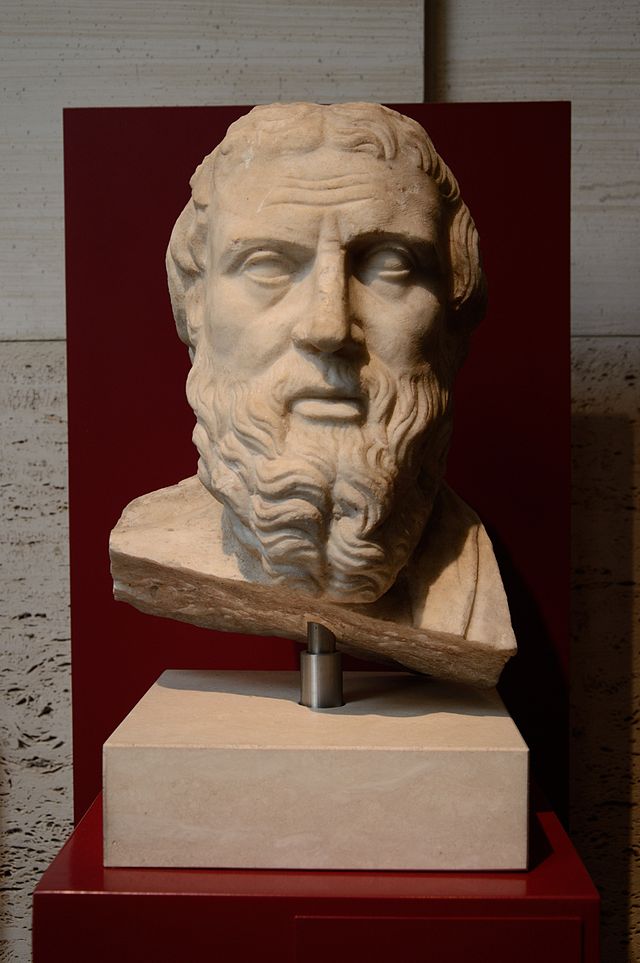
- Herodotus: A Greek historian who recorded not only important political events in Greek history and surrounding countries, but he recorded many other aspects of life of humanity like the flora and fauna in his time. He recorded the hippopotamus in Egypt.
- Pliny the Elder: A Roman naturalist, philosopher, and army commander. He recorded many scientific observations about wildlife that lived in the lands he traveled through. He even recorded observations about the hippos. Pliny the Elder was a Roman Naturalist who wrote about animals in his book, Naturalis Historia. Just like Herodotus, he recorded his observations about Hippopotamus, but this time it was information from an expert in the knowledge of animals.
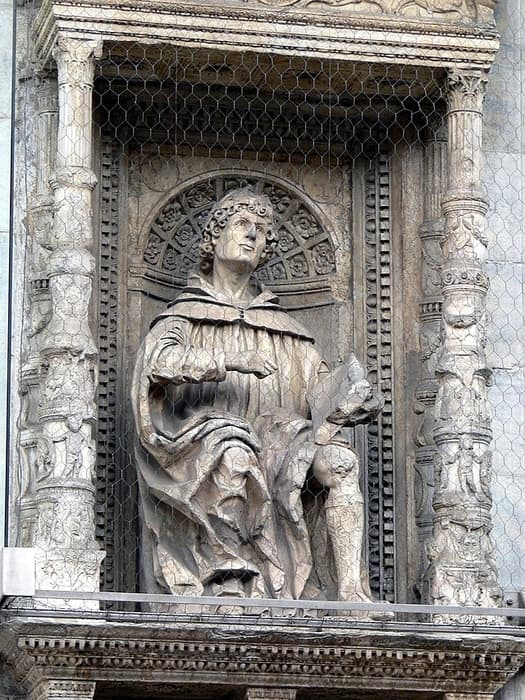
Fun facts
There are some fun facts about the Sudanese wild animals. Hippopotamuses tend to be cannibalistic when stressed out. In addition, warthogs, pigs and boars are omnivores and may attack, kill and eat helpless humans, including a baby, or an injured man or woman without protection or weapons.
The spotted hyenas used to live in Spain. Nile crocodiles used to live not only in Africa, but also in Palestine and Syria. Lions used to live in Western Europe, Greece, and North Africa. All of these animals used to live in these geographic regions before they went extinct.
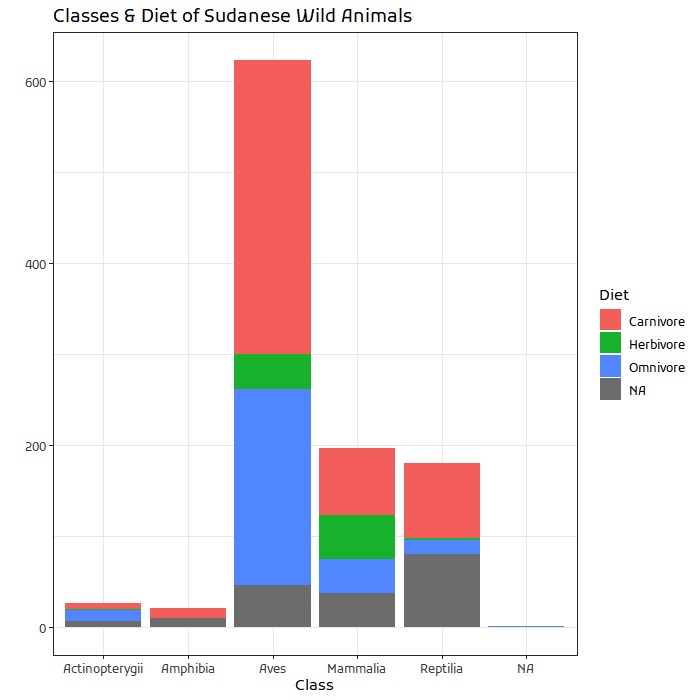
Sudan is rich with wildlife resources. Taxonomies are vital for us to classify animals and preserve them. Animals shaped many important aspects of our human history. Animals were an integral part that truly shaped the history of humanity and will continue to do so. The Sudanese people should take care of their wildlife as much as they can. Throughout time, animals have played a significant role in human civilisations. Lions and leopards were used to execute criminals in Rome to enforce the law, bovids were eaten as exotic dishes, and many other animals gave us awesome stories, movies and series from the historical folklore and mythology of our ancestors in many different civilisations. Animal drawings were also considered as letters of many written ancient languages such as Egyptian hieroglyphics. Body parts of animals were used to craft jewelries, body accessories, clothes, pharmaceuticals and medicine. It would be a shame that Sudan would waste a wealth of wild animal species that shaped the course of past great civilisations through the test of time.

Ahmed El-Affendi is a nomadic, coffeeholic and foodie data journalist, and data scientist who graduated from the University of Khartoum with a bachelor’s degree in IT. He is always reading books, exploring new cultures and learning new languages. He is also interested in social media analytics, cinematics, entrepreneurship, digital transformation, and digitisation. Find him on Twitter @affendi_xiii, Facebook @affendi_xiii, and projects on Linktree.




